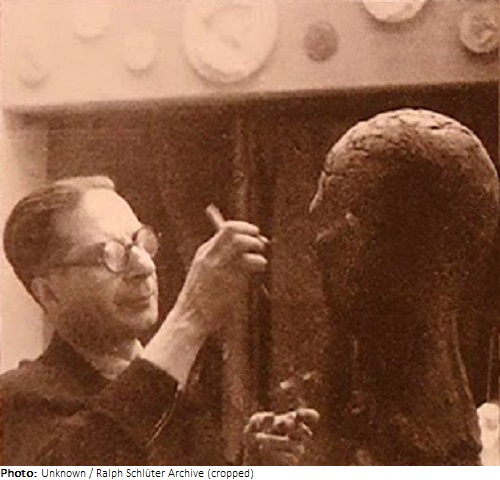Luis Fernandes

Biographical information
| Roles | Competed in Olympic Games (non-medal events) |
|---|---|
| Sex | Male |
| Full name | Luis•Fernandes de Carvalho e Reis |
| Used name | Luis•Fernandes |
| Born | 27 July 1895 in Ourém, Distrito de Santarém (POR) |
| Died | 2 September 1954 in off Arquipélago das Berlengas, Distrito de Leiria (POR) |
| NOC |  Portugal Portugal |
Biography
Luís Fernandes was a sculptor, designer, painter, and teacher. He attended secondary school in Leiria, where he attracted early attention with his caricatures. In 1914 he went to Lisboa with his friend and colleague, the painter Lino António (1898-1974), to study at the School of Fine Arts. Disappointed by the education there, both transferred to the Academy of Fine Arts in Porto. While António stayed with painting, Fernandes concentrated on sculpturing, and around 1921 he returned to Leiria.
His most famous works were monuments to the dead of World War I in Leiria and Coimbra, the bust of 17th century poet Francisco Rodrigues Lobo, and a series of large bas-reliefs for public buildings. As a painter he hardly ever appeared publicly. Fernandes was also a talented violinist and in 1946 became co-founder of the Orfeão de Leiria Conservatory.
Because of his political convictions, which could not be reconciled with the Estado Novo of dictator Salazar, Fernandes got into professional problems. Fernandes then worked as a teacher at various industrial schools, including the Industrial and Commercial School in Leiria, becoming director in 1950. He died in a tragic accident in the sea off the Berlengas, a group of islands off the west coast of Portugal. Concerning his Olympic work it is known only that it was created as a bronze sculpture or relief in 1952.
Results
| Games | Discipline (Sport) / Event | NOC / Team | Pos | Medal | As | |
|---|---|---|---|---|---|---|
| 1952 Summer Olympics | Art Competitions |  POR POR |
Luis Fernandes | |||
| Sculpturing, Open (Olympic (non-medal)) |